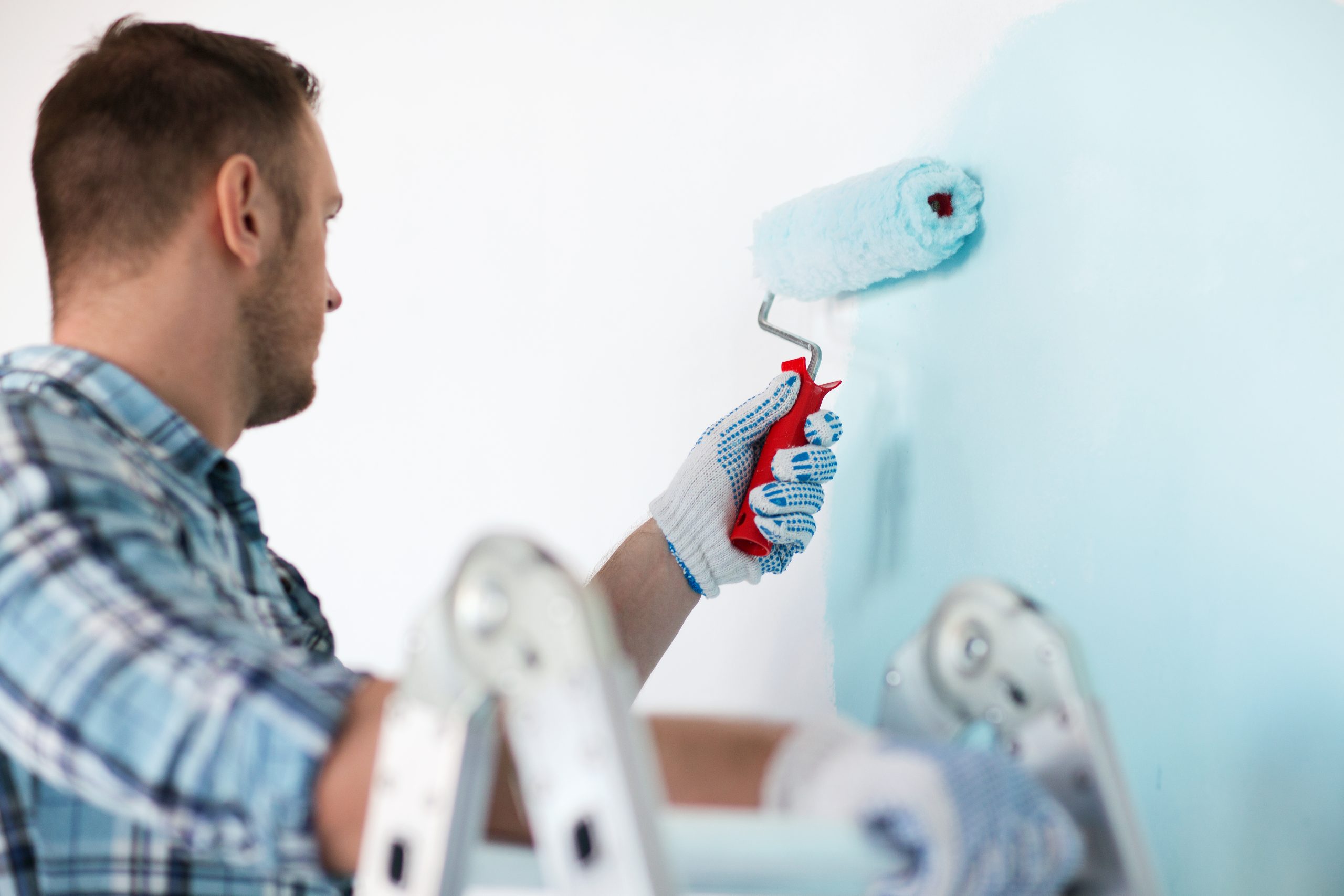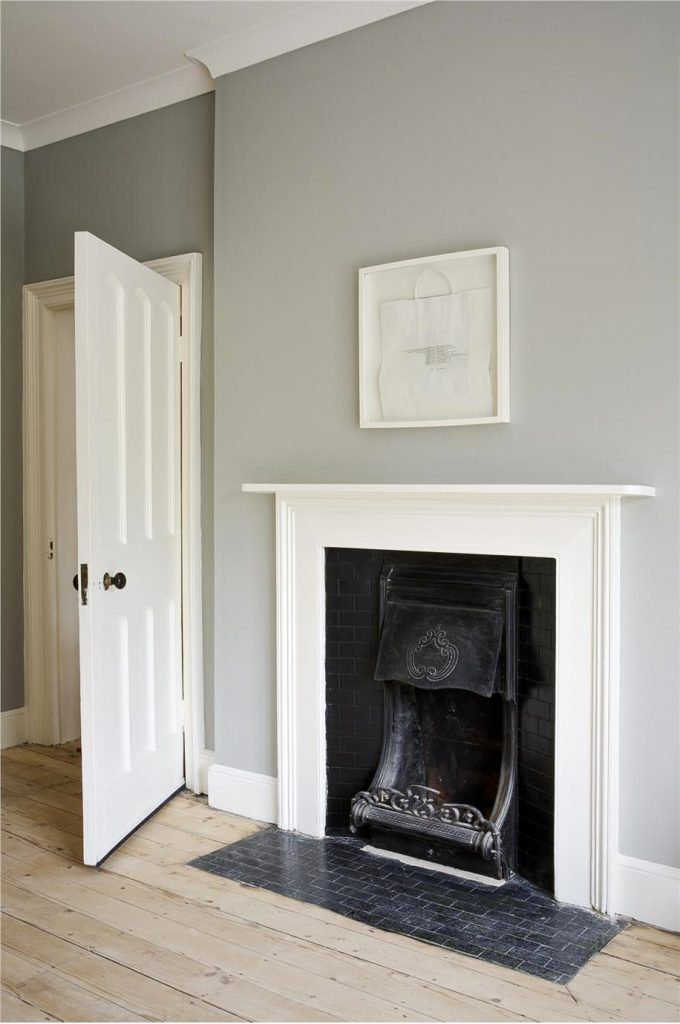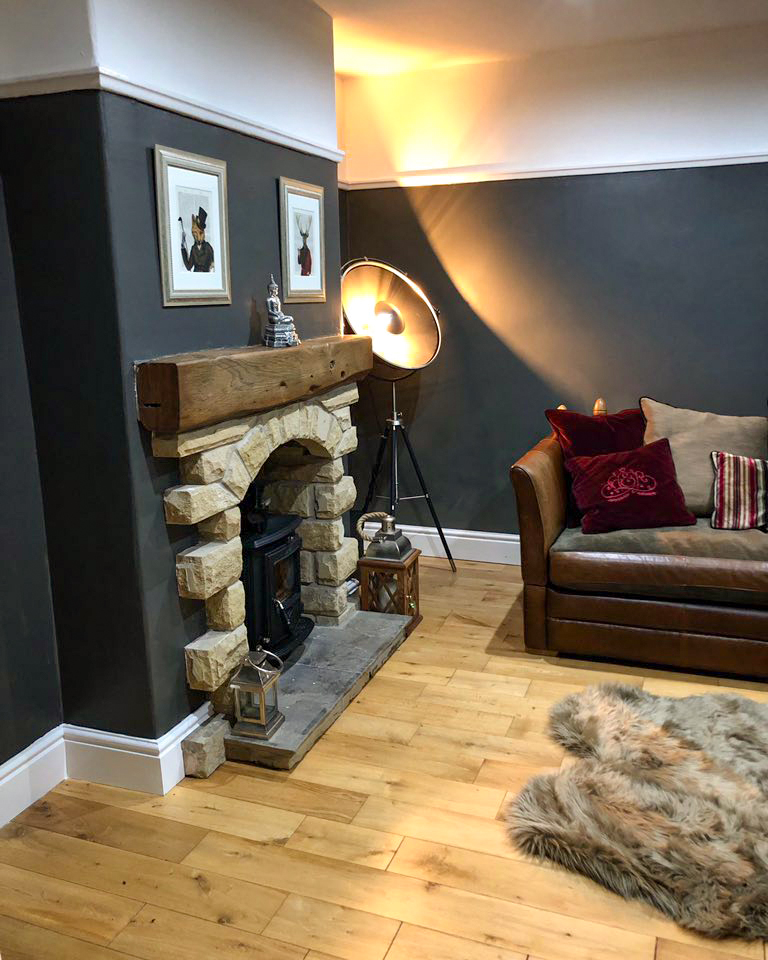
When to use interior emulsion paint and how to get the best finish? This is the perfect time of year for some interior painting. Soon the weather will be too unpredictable for painting outside, so it’s time to look inside for your next project. Brighten up your property or workplace with Paintmaster’s guide to using interior emulsion paint.
Emulsion paint is one of the most popular paint choices for interior walls and ceilings. It’s affordable, beginner friendly, and dries quickly, making it easy to recommend for both new and experienced painters.
However, as with any paint product, you have to choose carefully before you commit to buying. Getting the perfect finish isn’t easy. Don’t worry, we’re here to help.
What is Emulsion Paint?
Interior Emulsion paint is a water-based paint that can be used on walls and ceilings that have been previously painted or plastered. All types of emulsion are durable but have different finishes, so you can choose which is the best look for your project. This may depend on the colour you want for your walls, for example white emulsion paint is perfect for bright office areas but you may want a more muted grey for a garage or workshop. Or you might want a paint without a high sheen, or one that is shinier.
Whatever you need, Paintmaster has a wide range of emulsion paints to suit any wall or ceiling.
Types of Emulsion Paint
All tins of emulsion paint may look similar, but there are a few differences you should be aware of.
Unlike other water-based paints, emulsion paint contains vinyl or acrylic resin that create a hardwearing finish.
Here are the three types of interior emulsion paint:
- Matt Emulsion – Creates a non-shiny finish. Some matt emulsion can be very tough and long-lasting but glossier types may suit high-wear surfaces.
- Satin Emulsion – Satin creates a softer sheen and is more hardwearing than vinyl matt emulsion.
- Silk Emulsion – Creates a glossy finish that looks great and lasts for longer than other types of emulsion paint. Its tough compound makes it the best choice for humid rooms and buildings.
If you aren’t sure which sheen will look best, test your paint in an inconspicuous area first. This should be part of your walls or ceiling that gets different amounts of light during the day, so you can see how it will look in the mornings, evenings, and even when the weather is good or bad. This will help you choose the perfect colour too, speaking of which…
Best Colour for Emulsion Paint
Another factor that can affect your decision is the colour you want for your interior walls. Different types of emulsion paint will emphasize or make colour more muted, even if it’s the same shade.
The room you are painting is important too. White emulsion paint is perfect for a bright office areas, but you may want a more muted grey for a garage or workshop. For kitchens and living rooms, you can choose bold colours that have the all-important ‘wow’ factor or want a subtle shade that complements your decor.
The finish you choose will affect how the colour looks when dry. A glossy finish will reflect natural and artificial light, so glare can be an issue in bright rooms, or the opposite can be the case for a matt finish.
Thankfully, our emulsion paints are part of our Colour System. Simply enter an RAL or British Standard code at checkout and we’ll mix any colour you can imagine.
Where to use Interior Emulsion Paint?
Interior emulsion paint isn’t just for your home but is also a popular choice for commercial spaces. These include:
- Garages
- Workshops
- Factories
- Offices
Repainting a commercial space is a big job, but more than worth it. If your walls are drab and faded, it can affect the mood of anyone who has to see them for hours every day. A new, bold colour will brighten any room, increase productivity, and make you a more appealing choice when you’re doing interviews.
If you’re rebranding, be sure to match your walls to the new colour scheme!
As it only needs two coats, emulsion paint is perfect for larger projects and won’t break the bank no matter how much you need. It is also quick to apply and doesn’t release harmful fumes.


How to use Interior Emulsion Paint – Step by Step Guide
Painting interior walls may seem like a simple job, but there are a few steps you should follow to get the best results.
STEP 1 – Prep the room
Firstly, clear the room of all furniture and anything else that may get in your way. This will give you plenty of space to work in.
STEP 2 – Clean your walls
Lay down a drop sheet and clean your walls. Many people skip the cleaning and get straight to painting, but this can lead to a worse finish or even ruin the paint job entirely.
STEP 3 – Mask your trim, Cut in
Next, mask all trim around the walls. During the job you will likely need to use a ‘cutting in’ technique, where you use a paint brush to fill in areas you can’t reach with a paint roller.
Start cutting in a few centimetres from the corners and edges. Use a half-loaded paint brush so the paint isn’t too thick. A paint roller will spread it out thinner than a brush so try to match the layer it will leave. Take your time with this step.
STEP 4 – Start Rollering
Test the roller on your tray to make sure it’s rolling evenly. If you have used it a few times, or even if it is brand new, it may take a few rolls to work properly. Once loaded with paint, roll it on the tray again to remove excess paint and balance the roller.
Now for the fun part. Start from where you cut in and roll across the wall. Start in the brushed area as much as possible to even out the finish. Paint 3 or 4 metres and then move on to the next step.
STEP 5 – Lay off
After you have covered a section of the wall, you need to lay off to get the best finish. Place your unloaded paint roller in the top left of the painted section with the paint roller handle to the right. Then with very light pressure roll straight down the wall to the bottom.
This will even out the paint and prevent it being too thick. Do it again from the top, slightly overlapping where you already did to prevent streaks. Laying off creates the professional finish you need. It’s always worth the effort even for dull walls.
Once you’ve laid off the section, go back to step 4 and repeat.
STEP 6 – Finish Up
Apply 2-3 coats of paint within a period of 6 hours. Take your time with Rolling, rushing one section more than another will ruin the finish. Soon your walls will be freshly painted and looking great!
Can you use Emulsion Paint outside?
Interior emulsion paint, as the name suggests, is not designed for exterior surfaces. If you apply it to a fence as if it’s fence paint or wall outside like masonry paint, it may look good for a time, but will soon wear away.
Despite its durability, emulsion cannot withstand rain, snow, strong winds, and/or temperature changes. Emulsion paint lacks the binding agent that is present in exterior and masonry paints so will flake or fade easily if exposed to the elements.
If after painting your interior walls or ceilings, you have some paint spare, it shouldn’t be used on a surface it isn’t designed for. Instead, we recommend storing your excess paint in a cool, dry place, where it can be used for future touch-ups, or for your next interior project.
Alternatives to Emulsion Paint
It may be popular, but emulsion paint isn’t perfect for everyone.
For instance, if you want a paint that doesn’t harm the environment, there are a number of sustainable, natural paints that do the job just as well. However, because these are harder to manufacture, the prices are often much higher, so be sure to choose your paint carefully.
There are also specialist paints that offer higher durability or a specific sheen level that emulsion paint can’t provide.
However, emulsion paint is the most popular for a reason, and it’ll likely be the best choice for your next painting project.
The UK’s Most Trusted Paint Supplier
Interior emulsion paint gives you a lot of flexibility. With so many options available, you need a retailer who can guarantee quality.
We’re the no.1 choice for tradespeople, with large quantities of paint available at competitive prices, and we’re loved by domestic painters too!
Check out our blog for more information, advice and guides about all things painting. If you have any questions about any of our products, please get in touch.
We look forward to hearing from you.
FAQ's
How long does it take for emulsion paint to dry?
Emulsion paint that is water based dries the fastest and you can expect them to be touch dry in around 1-2 hours, however don’t add another layer for approximately 4 hours for the best finish, because your roller or brush could still pick up the first coat and create streaks.
How To Dispose Of Emulsion Paint?
To make sure you avoid causing environmental contamination and damage, the best way to dispose of emulsion paint, is to add sand or sawdust to the bucket. Then leave it for a few weeks till it is fully dried and put it in your normal rubbish bin.
How To Remove Emulsion Paint From Walls?
Wet emulsion paint is easy, all you need is hot soapy water and a cloth/sponge to remove it. However to remove dry emulsion paint you will need a specific type of paint stripper, that is designed for emulsion paint. Just remember that you can always paint over dry emulsion paint.
How to seal emulsion paint on wood?
After you’ve added your 2-3 layers of emulsion paint, to seal emulsion paint onto wood you can use varnish. However it is important that you use a water based varnish, as emulsion paint is a water based paint.
Is emulsion paint waterproof?
Emulsion paints can resist some moisture, meaning they work in kitchens and bathrooms, but aren’t fully waterproof. Emulsion paint can be cleaned with soap and water, just make sure to dry it quickly before the water can soak in.
What is interior emulsion paint?
Interior emulsion paint is water-based, making it a great choice for beginners. It is available in a wide range of colours, and comes in matte, satin, and silk finishes.
What is the difference between emulsion paint and normal paint?
Emulsion paints don’t crack or dry in sunlight and are less likely to peel when wet. This natural durability isn’t at the cost of looking great either; emulsion paints have the boldest colours and sheens.
What type of emulsion is best for walls?
Matte emulsion paint is the best for interior walls, but silk and satin options look great too. Many people refer matte as it reflects virtually no light, so there is no glare even in direct sunlight. It also looks great in a wide range of colours.
Which emulsion paint is best for interior walls?
Interior emulsion paint is great for interior walls. It’s inexpensive compared to other types of paint, is beginner friendly, and comes in a wide range of colours and sheens.
